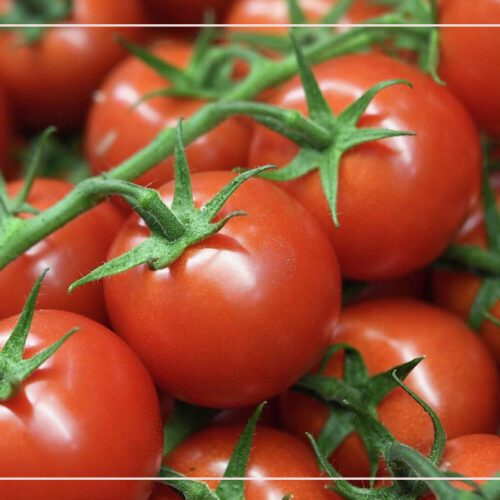
Tips for Growing Quinoa
Quinoa is quickly becoming one of the most popular health food ingredients on the market today. Not only is it a complete protein, but it also provides essential vitamins and minerals, making it a nutritious addition to any diet. What’s more, quinoa is gluten-free, so those with sensitivities can enjoy this tasty grain without worry. Whether used as an alternative to rice or in a variety of dishes, quinoa has earned its place in the culinary spotlight due to its great taste and excellent nutritional profile. In this article, we learn about quinoa, its benefits, and valuable tips about growing and harvesting it.
What is Quinoa?
Quinoa may look like a grain, but it is actually a tiny seed known as a pseudocereal. It belongs to the goosefoot family – making it similar to spinach, beets, and lambs quarter. It grows about 6 feet (2 m.) tall and can be used for decoration as well as nutrition.
Seedheads of Quinoa come in a variety of colors such as white, red, pink, purple, yellow, and black. It is also highly nutritious and offers great health benefits due to its low sodium content. It has lesser salt levels than wheat, barley, or corn and contains more essential nutrients for a balanced diet.
Although the availability of quinoa is increasing each year, it remains expensive when compared to other grains.
Who Can Grow Quinoa?
Most people have the ability to grow quinoa in their area if they have the right climate and are willing to dedicate a big space for it. The climate is the main obstacle. Quinoa needs cool night temps and day temps lower than 95°F (35°C) as well as short days.
Plants can withstand temperatures as low as 28°F (-2°C.) at night and their quality increases if exposed to frost. This should be the case for the duration of the 130-day growth period.
Tips to grow quinoa:
- Ensure that you thoroughly till the soil, incorporating a full-fledged fertilizer or spreading a layer of organic compost such as Micro Plus
- Plant your rows of plants at an interval of 3 feet (1 m.) wide and 18 inches (46 cm.) apart.
- To plant the seeds, dig 1/2-to-1-inch (1-2.5 cm.) trenches in each row with a hoe or cultivating tool. Ensure that the depth is consistent for better growth and productivity.
- In order to care for quinoa plants, place the seeds in a trench and fill it back up with soil. Then, water lightly and remember that too much water can lead to the seeds rotting. For optimal growth, make sure that the soil does not get dried out completely.
- It is best to water plants lightly but often for better absorption instead of deeply. Fertilize at the time of planting and then add a side dress of nitrogen fertilizer such as Add Life after four to six weeks, as you would for your vegetable garden.
Quinoa Growing and Harvesting:
While Bolivia and Peru are the main suppliers of quinoa, growing and harvesting it on your own is entirely possible. Quinoa is known for its ability to thrive in various climates, making it an ideal crop for both small-scale farmers and home gardeners alike. With a little bit of effort, you can enjoy the benefits of fresh, homegrown quinoa in no time!
- To ensure quinoa grows healthily, the temperatures must not exceed 90°F (32°C). Therefore, sowing can be quite critical. For most parts of Canada and the US in the south, it is best to plant quinoa between late April and early May when soil temperatures are above 60°F (15°C).
- Quinoa, being a warm-season crop, should be planted in an area that receives plenty of sunlight. Before planting, it is important to make sure that the soil is prepared properly to ensure good germination and growth.
- Plant seeds at around half two feet intervals, making sure they are covered properly with soil. Once the plants begin to develop their first true leaves, thin out the seedlings, leaving around six to eighteen inches between each one.
- Make sure the soil is moist until the start of June, as this is when quinoa starts to become drought resistant and requires minimal watering.
Process before eating:
- To turn quinoa into an edible form, it needs to be processed. An easy way is to place the heads in a paper bag and gently shake them – the seeds and any chaff will be separated as they fall out of the heads.
- Put the seeds and chaff on a tarp or bowl and stir often to ensure proper drying. Then, separate the chaff from the seeds. Because the chaff is much lighter than the seeds, it’s best to just pour them back and forth into two bowls in a windy environment, making sure you’re causing the minimal mess.
- The heavier quinoa seeds will stay in the bowl while the chaff is blown away. This can be achieved with a bed sheet and a fan indoors. However, the bitter saponin coating must be removed from the quinoa seeds first before using them.
- To clean the items, you should rinse them in water and rub them repeatedly until no bubbles are seen. You may use a pillowcase for washing if desired, but make sure to do so without detergent. Afterward, you can either use the items or set them out in a warm, shady area to dry completely before keeping them in an air-tight container.
Related Topic:
Essential Tips For Better Date Palm Trees
Common Questions:
-
Where does quinoa grow best?
Despite the thin soil and lack of rain, quinoa flourishes on the altiplano (or high plains). Peru and Bolivia are major producers of quinoa, while Ecuador, Colombia, and Argentina also produce it to a lesser extent.
-
What are the problems in quinoa farming?
Common problems faced by quinoa farmers include the tarnished plant bug, stem borer, flea beetles, aphids, leafhoppers, and beet armyworms. These pests can cause significant damage to crops if left untreated.
-
Is quinoa more sustainable than rice?
Quinoa is not only highly nutritious, but it also requires much less water to cultivate than rice – as proved by Peru’s Ministry of Agriculture. To be more precise, quinoa needs 1,000 cubic meters whereas rice would require 15,000 cubic meters for 1 hectare.





